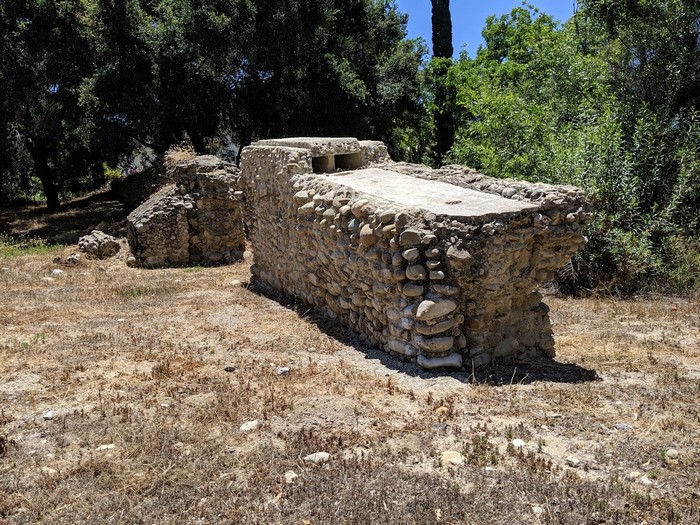by Richard Senate
When Father Junipero Serra founded Mission San Buenaventura on March 31, 1782, he placed a padre with an engineering background in charge, with orders to secure a reliable water source for the Mission Settlement. Although the Mission was located near the mouth of the San Buenaventura River, Serra knew the river was mostly dry year-round, and a dependable water supply was essential for the new Mission to thrive.
The plan was ambitious: a seven-mile aqueduct that would connect a dam on the San Antonio Creek with the Mission, following the contours of the mountains as it gently descended to the settlement. This aqueduct would be the longest in California at the time. Built using river cobbles, tiles, and Roman cement, the construction was carried out by the Mission converts who would ultimately benefit from the project. Today, the dam is gone, destroyed during the construction of Highway 33 north of Casitas Springs. Only a few fragments of this early California engineering marvel remain, most notably off Canada Larga, where Roman-style arches once spanned a creek. What was once a vital structure now resembles little more than a stone wall.
Because the workers were laboring so far from the Mission Church, a temporary settlement of reed jakals (huts), the traditional housing of the Chumash people, was established. To meet their spiritual needs, a small adobe chapel was built and dedicated to Santa Gertrudis. According to legend, the project was attacked by Chumash who resisted conversion to the new religion and European ways. They swarmed the construction site, forcing the workers and padres to flee. The attackers tried to destroy the aqueduct but were largely unsuccessful until soldiers from the Mission dispersed them.
Despite these challenges, the work slowly progressed towards the Mission, where the aqueduct terminated at a hill behind the settlement. There, a red brick building was constructed to filter the water using charcoal and sand before diverting it via clay pipes to the five fountains that adorned the Mission. These fountains were not merely decorative; they provided the settlement with drinking water. Filtered through this system, the water—always known for its peculiar taste in Ventura—became as clear as modern bottled water. From the hilltop structure, additional aqueducts carried water to the extensive gardens, vineyards, and orchards that supported the growing Mission community.
The aqueduct served what would eventually become Ventura for generations, providing water even after Mission times. It was only after a rainstorm partially demolished the aqueduct in the early 1860s that it ceased to function. There was once a proposal to erect a monument to honor this engineering feat and perhaps preserve the section at Canada Larga, but it was never realized. Nonetheless, the story of this unique structure deserves to be remembered as an integral part of our history.
The water building still stands today on Valdez Alley, once known as “El Caballo” due to a fountain that was believed to be shaped like a horse’s head. However, evidence suggests the fountain was actually shaped like a lamb. Despite this, the nickname “El Caballo” persisted through Mission times, adding yet another layer to this Mission mystery.

